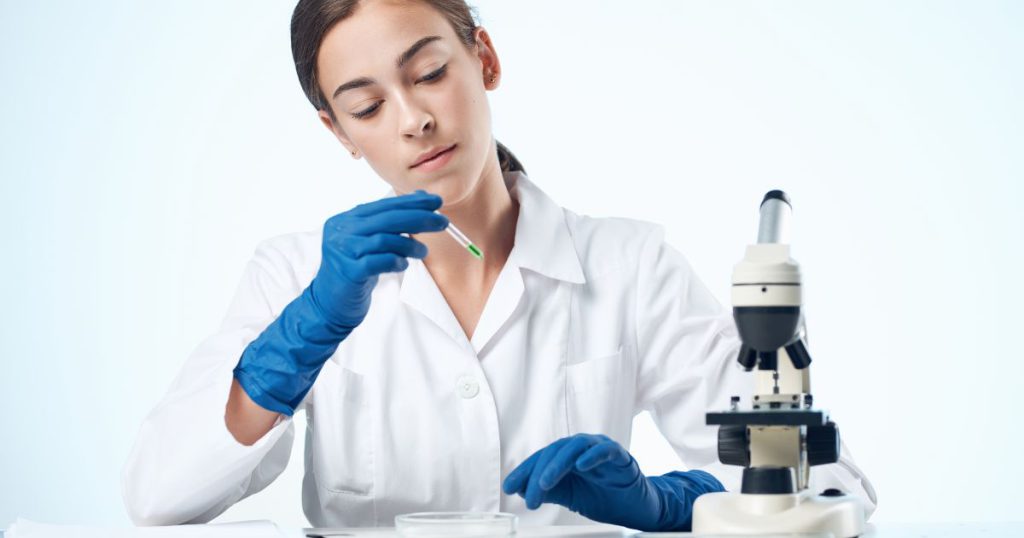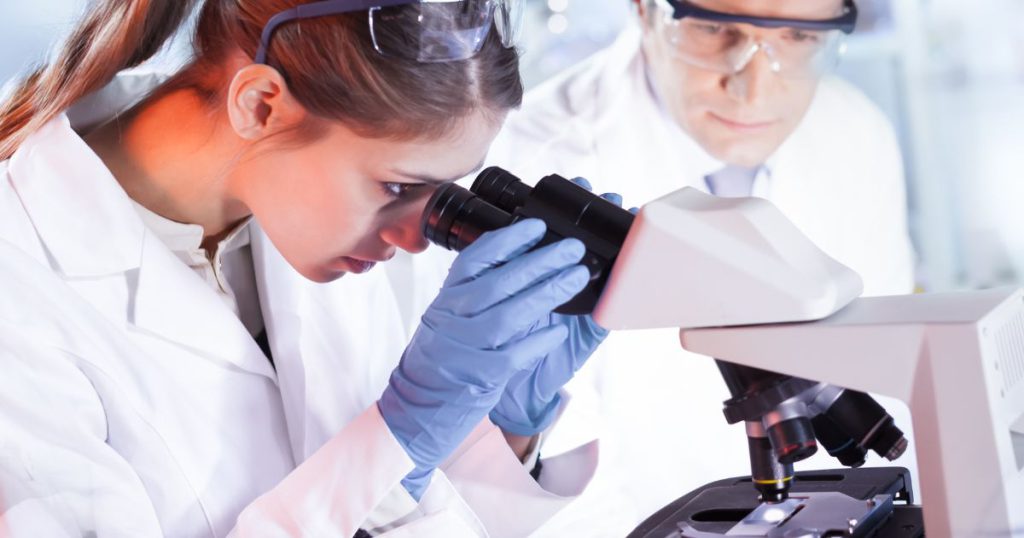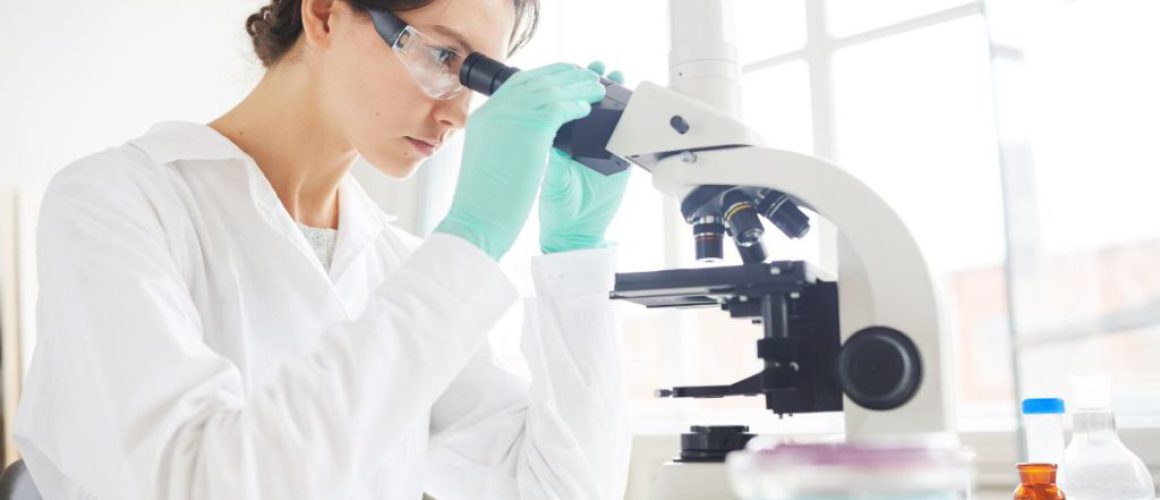Career Prospects: Histotechnologist
Table of Contents
Histotechnologist
| Education | Bachelor’s degree in Medical Technology, Biology, or a related field |
|---|---|
| Skills | Precision, attention to detail, operation of laboratory equipment |
| Role | Preparing and staining tissue samples for microscopic examination |
| Workplaces | Medical and clinical laboratories, research institutions, pharmaceutical companies |

Diving into the world of a Histotechnologist is like exploring a hidden treasure in the realm of medical technology. This article unravels the fascinating journey of these tissue magicians, their crucial role in disease diagnosis, and why their work matters to you. Stay tuned!
Introduction
As a Medical Technology student, I’ve always been fascinated by the diverse career paths that our field offers, and one such path that has caught my attention is that of a Histotechnologist. This profession, while not as commonly known as doctors or nurses, plays a crucial role in the healthcare industry. Histotechnologists are the unsung heroes who work behind the scenes, contributing significantly to the diagnosis and treatment of diseases. In this article, we will delve into the world of a Histotechnologist, exploring their roles, responsibilities, and the impact they have on patient care.
The work of a Histotechnologist often goes unseen, but it is instrumental in aiding pathologists in their diagnoses, ultimately impacting patient care
What is a Histotechnologist?
Before we delve into the career prospects, let’s first understand who a Histotechnologist is and what they do in the realm of medical technology. A Histotechnologist is a highly skilled professional who specializes in the study of the microscopic structure of tissues, also known as histology. They prepare tissue samples for examination under a microscope, a process that is crucial for diagnosing a wide range of diseases. From cancer to infectious diseases, the work of a Histotechnologist is instrumental in helping pathologists reach accurate diagnoses.
Places Where a Histotechnologist Can Work
- Medical and clinical laboratories in hospitals
- Private clinics
- Research institutions
- Veterinary pathology labs
- Pharmaceutical companies
- Public health organizations
The Role of a Histotechnologist in Medical Technology
Histotechnologists, often the unsung heroes in the medical field, play a pivotal role in the diagnosis and treatment of diseases. They are responsible for preparing and staining tissue samples, making them ready for microscopic examination. This process, while intricate, is vital as it allows pathologists to identify abnormalities in the tissue that could indicate disease. Moreover, Histotechnologists also operate complex laboratory equipment and adhere to strict quality control procedures to ensure accurate results.
Key Responsibilities of a Histotechnologist
| Responsibilities |
|---|
| Tissue sample preparation |
| Operation of laboratory equipment |
| Adherence to quality control procedures |
| Collaboration with pathologists |

The Intricacies of Working with Body Tissue
One of the most fascinating aspects of being a Histotechnologist is the opportunity to work with body tissue samples, a task that requires precision and a keen eye for detail. Each tissue sample is unique, and the process of preparing it for examination can be likened to an art form. Histotechnologists must carefully process the tissue, which involves preserving, slicing, staining, and mounting it onto a microscope slide. This meticulous process allows for the detailed study of the tissue’s microscopic structures, providing valuable information for diagnosis and treatment.
Skills Required for a Histotechnologist
| Skills |
|---|
| Precision |
| Attention to detail |
| Operation of complex laboratory equipment |
| Understanding of safety and quality control procedures |
The Collaboration with Pathologists
A significant part of a Histotechnologist’s role involves working closely with pathologists, aiding them in making accurate medical diagnoses. Pathologists rely on the slides prepared by Histotechnologists to examine the tissue samples under a microscope. The stained slides highlight the different structures and cells in the tissue, allowing pathologists to identify any abnormalities. This collaborative effort between Histotechnologists and pathologists is crucial in the medical field, contributing significantly to patient care.
The Importance of Histology in Medical Technology
Histology, the study of microscopic structures of tissues, is a cornerstone of medical technology and a key area of expertise for a Histotechnologist. It provides a detailed view of the body at a cellular level, offering insights into the functioning of tissues and organs. This knowledge is vital in understanding the pathogenesis of diseases and in developing effective treatments. As a Histotechnologist, mastering histology is not just about technical skills, but also about understanding the complex biological processes that occur within our bodies.

The Role of a Histotechnologist in a Medical Laboratory
A medical laboratory is a Histotechnologist’s playground, where they apply their skills in histotechnology to contribute to the larger field of laboratory sciences. In this setting, Histotechnologists are responsible for the entire process of preparing tissue samples, from receiving the raw tissue to delivering the final stained slides to the pathologist. They operate sophisticated laboratory equipment, maintain quality control, and ensure the accuracy of their work. Their expertise contributes to the efficient functioning of the laboratory, making them an integral part of the healthcare team.
Key Differences Between a Histotechnologist and a Histotechnician
- Level of responsibility
- Complexity of tasks performed
- Histotechnologists often supervise the work of Histotechnicians
The Process of Preparing Tissue Samples and Microscope Slides
As a Histotechnologist, preparing tissue samples and microscope slides for examination by pathologists is a crucial part of the job, and here’s why it’s so important. The process begins with the receipt of a tissue sample, which is then preserved and embedded in a medium like paraffin wax. The embedded tissue is then thinly sliced and placed on a microscope slide. The slide is then stained to highlight the different structures within the tissue. Each step in this process requires precision and attention to detail, ensuring that the final slide provides a clear and accurate representation of the tissue sample.
Steps in Tissue Sample Preparation
- Receipt of tissue sample
- Preservation of tissue
- Embedding tissue in a medium like paraffin wax
- Slicing of tissue
- Placement of tissue on a microscope slide
- Staining of tissue to highlight different structures
The Impact of a Histotechnologist’s Work on Diagnosis
The work of a Histotechnologist often goes unseen, but it is instrumental in aiding pathologists in their diagnoses, ultimately impacting patient care. The slides they prepare provide the visual evidence pathologists need to identify and diagnose diseases. Without the meticulous work of Histotechnologists, the diagnosis of diseases at a cellular level would be nearly impossible. Their work, therefore, plays a crucial role in the medical field, contributing to the understanding, diagnosis, and treatment of a wide range of diseases.
Embarking on a career as a Histotechnologist offers a unique opportunity to contribute to the medical field, combining scientific expertise with a profound impact on patient care.

Conclusion
Embarking on a career as a Histotechnologist offers a unique opportunity to contribute to the medical field, combining scientific expertise with a profound impact on patient care. As a Histotechnologist, you are not just a laboratory professional but a vital member of the healthcare team. Your work, while often behind the scenes, is instrumental in the diagnosis and treatment of diseases, making a difference in the lives of patients every day.
Career Outlook for a Histotechnologist
| Career Outlook |
|---|
| Growing demand in line with overall healthcare services |
| Increased need due to advancements in medical technology |
| Opportunities in hospitals, private clinics, research institutions |
Disclaimer: This article is intended for informational purposes only and does not constitute professional medical advice. Always seek the advice of a qualified healthcare provider with any questions you may have regarding a medical condition or career decisions in the medical field.
This post is part of the Career Prospects Category. For more check out Medical Technology Career Prospects: A Student’s Perspective
Also check out my other posts: Clinical laboratory technician/medical laboratory technician and Blood bank technologist
Frequently Asked Questions
What is a Histotechnologist?
A Histotechnologist is a highly skilled professional in the medical field who specializes in the study of the microscopic structure of tissues, also known as histology. They prepare and stain tissue samples for examination under a microscope, a process that is crucial for diagnosing a wide range of diseases.
What does a Histotechnologist do?
A Histotechnologist’s primary responsibility is to prepare tissue samples for microscopic examination. This involves a meticulous process of preserving, slicing, staining, and mounting the tissue onto a microscope slide. They also operate complex laboratory equipment and adhere to strict quality control procedures to ensure accurate results.
Where do Histotechnologists work?
Histotechnologists typically work in medical and clinical laboratories in hospitals, private clinics, and research institutions. They may also find employment in veterinary pathology labs, pharmaceutical companies, and public health organizations.
What skills are required to become a Histotechnologist?
Becoming a Histotechnologist requires a strong foundation in biology and chemistry, as well as specialized training in histotechnology. Key skills include precision, attention to detail, and the ability to operate complex laboratory equipment. They also need to have a good understanding of safety and quality control procedures in a laboratory setting.
How does a Histotechnologist contribute to patient care?
While Histotechnologists do not interact with patients directly, their work plays a crucial role in patient care. The tissue samples they prepare provide the visual evidence pathologists need to identify and diagnose diseases. Their work, therefore, contributes significantly to the diagnosis and treatment of a wide range of diseases.
What is the difference between a Histotechnologist and a Histotechnician?
While both Histotechnologists and Histotechnicians work in the field of histology, the main difference lies in their level of responsibility and the complexity of the tasks they perform. Histotechnologists often perform more complex procedures and may supervise the work of Histotechnicians.
What is the career outlook for a Histotechnologist?
The demand for Histotechnologists is expected to grow in line with the overall demand for healthcare services. As medical technology continues to advance, the need for specialized professionals like Histotechnologists who can operate complex laboratory equipment and perform intricate procedures is likely to increase.
What education is required to become a Histotechnologist?
To become a Histotechnologist, one typically needs a bachelor’s degree in medical technology, biology, or a related field. This is often followed by specialized training in histotechnology. Many countries also require Histotechnologists to be certified or licensed to practice.
Read More
Faculty of Medical Technology – Mahidol University
Sean Schepers is a third-year Medical Technology student at Mahidol University with a passion for all things health and medicine. His journey into the world of medicine has led him to explore various fields. Sean's blog posts offer a unique perspective, combining his academic insights with personal experiences. When he's not studying or blogging, Sean enjoys keeping up with politics and planning his future career in medicine.
In addition to his studies, Sean serves as the chairman of the Rights, Liberties, and Welfare Committee, a role that reflects his commitment to advocacy and social justice. Beyond his academic pursuits, Sean offers tutoring services in English and Biology, further demonstrating his dedication to education and mentorship. His journey is one of continuous discovery, and he invites others to join him as he explores the dynamic and transformative world of medical technology.


